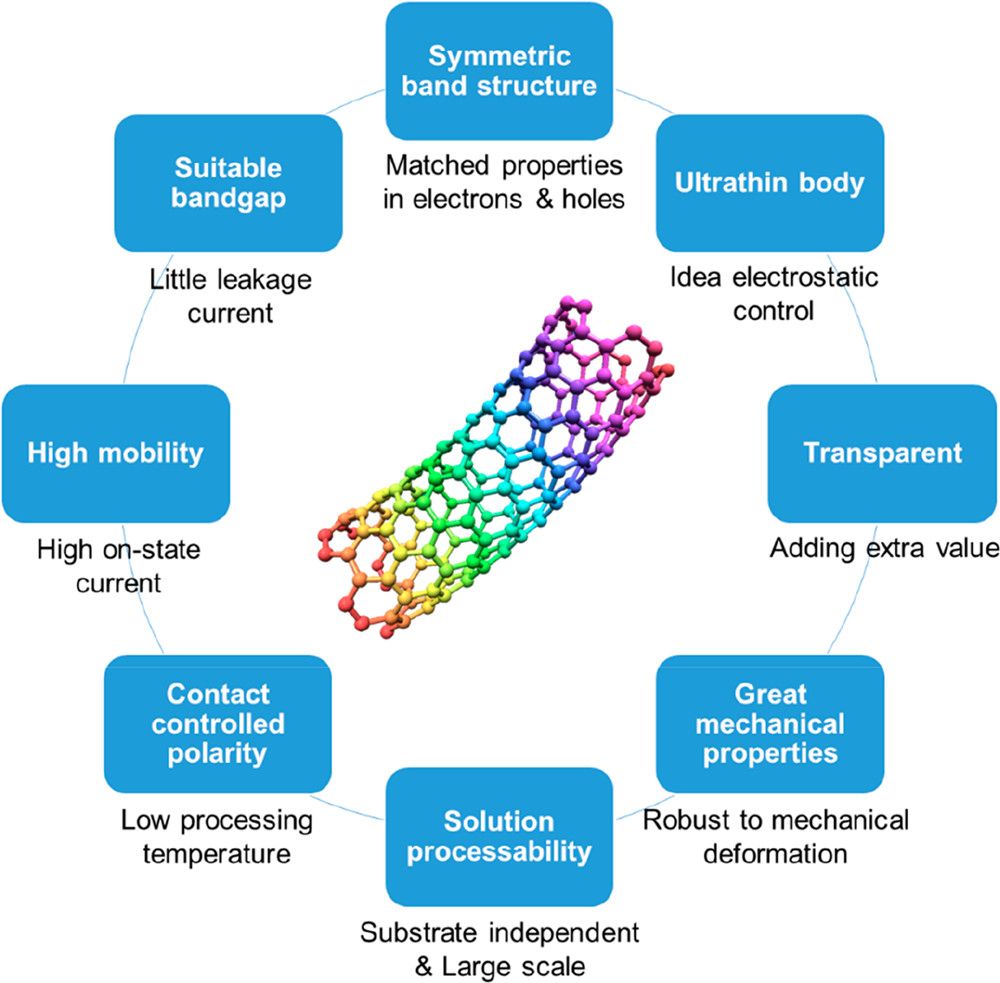American scientists have confirmed that carbon-based electronics are more radiation-hardened than silicon-based components. This discovery can help humans reach the deeper space of solar system. Whether it is a satellite, or any deep space probe launched by NASA, when flying over the moon and Mars, it encountered long lasting intensive cosmic radiation, which could harm or even destroy the onboard electronic equipment. According to Voyager 1 and Voyager 2, the radiation outside the solar system can be even greater. To expand future interstellar missions, the U.S. scientists have conducted extensive studies and published their findings. These publications show that carbon nanotube transistors and circuits can survive harshest comic radiation and still maintain their electrical performance and stored data.

The long duration and distance of deep space missions are currently limited by many factors, such as the energy efficiency and the technology for protecting the device and crew. For example, strong radiation in space can damage electronic equipment, cause data loss, and even destroys the computers of the main controls. One possibility is to integrate carbon nanotubes into electronic components that are currently widely used, or to make MOSFETs (Metal-Oxide Silicon Field Effect Transistors) directly with carbon nanotubes. These single-atom-thick transistors will be more energy efficient than current silicon-based transistors, and the ultra-small size of these nanotubes will also help greatly reduce risk of damage by radiation effects.


Our deep space exploration is not only limited by the propulsion technology used by the rockets and spacecraft, but also by the chips at the end of the day. We can’t use the old technology of the Apollo era to explore the interstellar deep space outside our solar system. Instead, we will use carbon-based chips such as IC made of carbon nanotube transistors. The carbon-based transistor technology will be one of the greatest innovations that we can rely on for safe and reliable deep space exploration.

Reference
- Zhu, M., Xiao, H., Yan, G. et al.Radiation-hardened and repairable integrated circuits based on carbon nanotube transistors with ion gel gates. Nat Electron 3, 622–629 (2020). https://doi.org/10.1038/s41928-020-0465-1
- Julian J. McMorrow, Cory D. Cress, William A. Gaviria Rojas, Michael L. Geier, Tobin J. Marks, and Mark C. Hersam, Radiation-Hard Complementary Integrated Circuits Based on Semiconducting Single-Walled Carbon Nanotubes, ACS Nano 2017 11 (3), 2992-3000, DOI: 10.1021/acsnano.6b08561
- Zhu, M., Xiao, H., Yan, G. et al. Radiation-hardened and repairable integrated circuits based on carbon nanotube transistors with ion gel gates. Nat Electron 3, 622–629 (2020). https://doi.org/10.1038/s41928-020-0465-1
- Yunong Xie,Donglai Zhong,Chenwei Fan,Xiaosong Deng,Lian-Mao Peng,Zhiyong Zhang, Highly Temperature-Stable Carbon Nanotube Transistors and Gigahertz Integrated Circuits for Cryogenic Electronics, Advanced Electronic MaterialsVolume 7, Issue 8 2100202, https://doi.org/10.1002/aelm.202100202
- Pritpal S. Kanhaiya, Andrew Yu, Richard Netzer, William Kemp, Derek Doyle, and Max M. Shulaker, Carbon Nanotubes for Radiation-Tolerant Electronics, ACS Nano Article, October 27, 2021, https://doi.org/10.1021/acsnano.1c04194
- Youfan Hu, Lian-Mao Peng, Li Xiang, and Heng Zhang, Flexible Integrated Circuits Based on Carbon Nanotubes, Accounts of Materials Research 2020 1 (1), 88-99, DOI: 10.1021/accountsmr.0c00020
- Integrated Circuits to Enable Exploration of the Harshest Environments in the Solar System | Science Mission Directorate (nasa.gov)
- Carbon Nanotubes Could Help Electronics Withstand Outer Space’s Damaging Cosmic Radiation (scitechdaily.com)

